
There is no order of cavalry that has captivated the imagination as much as the warrior monks popularly known as ‘the Templars’. Their legendary courage in the crusades and the most dangerous frontier places, the Spartan discipline of the knight-monks, the international political influence they reached, the secrecy that enveloped many of their performances, and their incalculable economic power, are still a subject of study. So powerful did they become that the Papacy and the King of France must have conspired to destroy them and to appropriate their possessions. Seven years would have had to pass from the first arrests in 1307 until the last executions of the leaders of the order seven years later; much being due to legally disguising that outrage, to try to justify one of the greatest plundering in history. So they are still fascinating.
The Templar Castles in Spain are some of the most spectacular of this order. Here we explain which ones they are and how to visit them.
The Ebro River was, until the arrival of the railway, a commercial communication artery of the first order between Zaragoza and the Mediterranean. For that reason, beginning from the year 1153 the Templars modified the castle turning it into a fortress – Cistercian monastery from which to pray to God and to administer its international delivery. To ensure the invulnerability of their so-called ‘Torre del Tesoro (Treasure Tower)’, they erected a barbican up to 25 metres high. In the visit to the spectacular fortress, pay particular attention to the so-called ‘Torre de la Sangre (Tower of the Blood)’ because it was there where the last knights who refused to surrender to the troops of the King of Aragon were executed.
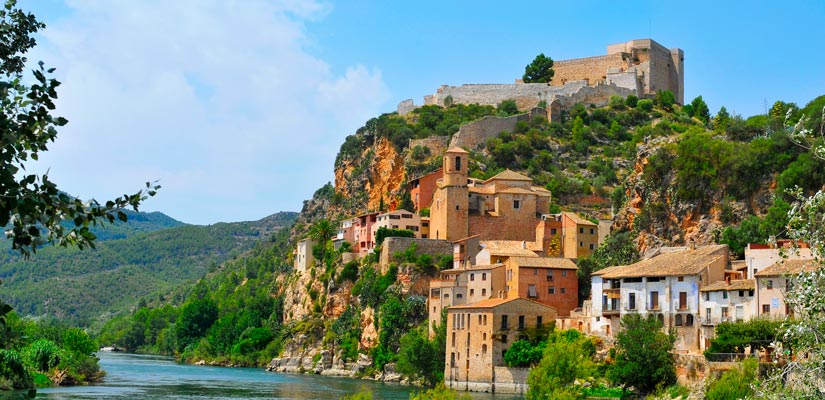
Miravet and its castle on top
The protection of the French Way was one of the missions of the Templars in Spain, assignment that they shared with the order of Santiago. From 1178 the Templars transformed the fortress at the top of the hill of Ponferrada into one of the biggest and waterproof of the peninsula; three defensive belts built on its eight thousand square metres of surface. Subject of many reforms since the 14th century, the so-called ‘Torre del Malvecino’ is one of the buildings of Templar authorship that are still standing.
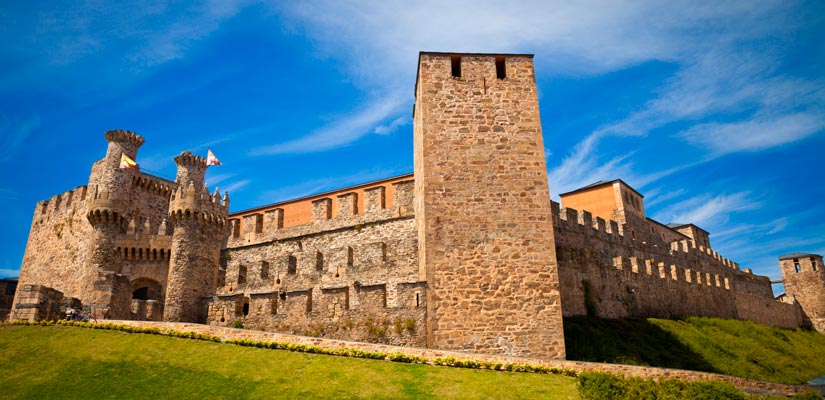
Castle of Ponferrada
The impressive fortress of Peñíscola is associated with the famous film El Cid (the version starring Charlton Heston) and the figure of Papa Luna (who took refuge there until his death in 1423); many call it “the Castle of Pope Luna”. But the truth is that inside the inclined walls – constructed in the 16th century – there are some Romanesque-style areas built by the Templars since 1294.
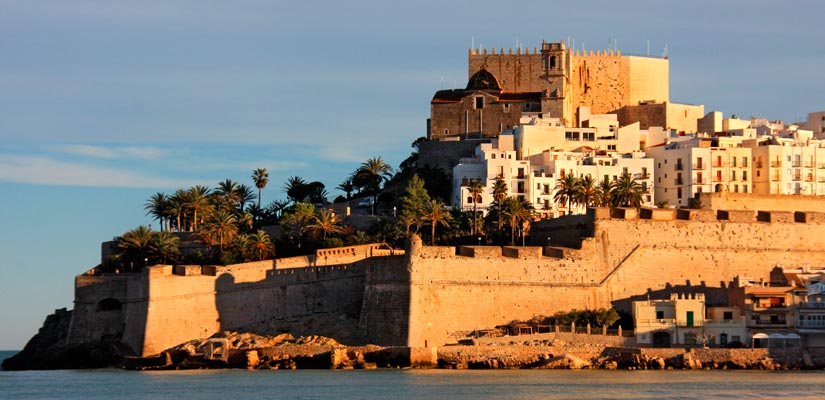
Walls and castle of Peñíscola
Very little is known of the Castle of Montalbán, which by the middle of the 12th century must have been reformed by the Templars (on the base of a Muslim fortress). It was usual for this order to be assigned the defense of an area as conflicting as this one during that time – as access to the Torcón River and defense of the nearby communication route justifies it. But less than a century later – because of the crucial battle of the Navas de Tolosa (1212) – the border moved up to more than one centenary kilometres south; so this fortress lost its defensive role and was completely abandoned in no time. It is currently in a state of ruin. Access is isolated and complicated; on the road CM 2009 – five kilometres from San Martin de Montalbán – is the detour to the desolate place where its ruins are. The nearby village of La Puebla de Montalbán is the usual base for this intrepid excursion.
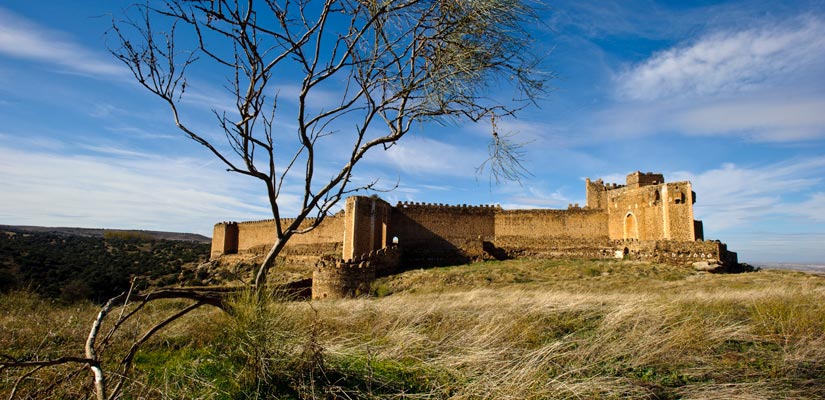
Castle of Montalbán
In 1238, the Knights Templar helped King Alfonso IX to conquer the Arab fortress which would happen to be called Jerez de los Caballeros. Upon having happened to be a dangerous border zone and considering the contribution of the Templars in its capture, the King entrusted them its defense and they happened to reform the castle for its new dual purpose: fortress and monastery.
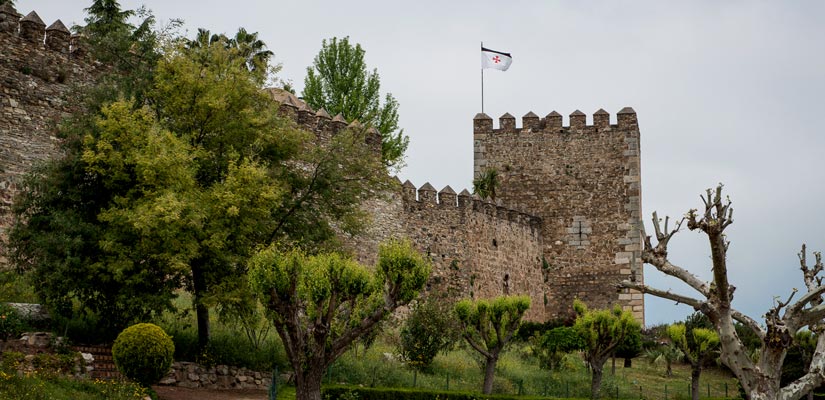
Castle of Jerez de los Caballeros. Picture by Juan Ismael Santana
In 1143, following the so-called ‘Concord of Gerona’, the Templars received the castle of Monzón, which they strengthened and adjusted for its new double function: militaristic and monastic. Monzón is an important town with many attractions. The external appearance of the fortress is from later centuries, but in the interior there are numerous aspects of Romanesque architecture of Templar origin. This castle has gone down in history as the place where the knights of this order protected and educated the future king James I, ‘the conqueror’ of Aragon; a historic event that is commemorated every year.